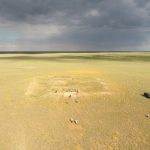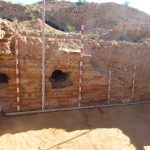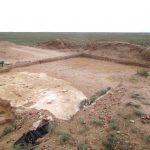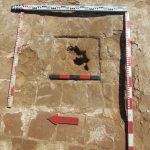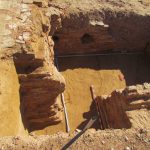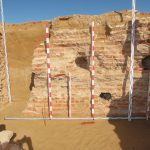Archaeological studies of the Golden Horde mausoleums
In August 2025, the archaeological expedition of the Institute of Archaeology named after A.Kh. Khalikov of the Tatarstan Academy of Sciences kept conducting the research of the federal heritage site “Complex of mausoleums near the village of Lapas”. This site is located in the northern neighbourhood of the village of Lapas in the Kharabalin district of the Astrakhan region, near the confluence of the Akhtuba River and its tributary, the Bolshoy Ashuluk River. The investigations were initially started in 2018.
The archaeological studies are conducted as a part of the state program of the Republic of Tatarstan, “Preservation of the identity of the Tatar people,” which aims to carry out historical and archaeological studies of medieval cities and to explore the historical and cultural heritage of the Turkic-Tatar peoples outside the Republic of Tatarstan.
The expedition continued its study of “Mausoleum No. 1,” dated to the 14th century. To the east of the 2022 and 2023 excavation trenches, a rectangular trench No. 4 was laid out, with a total area of 196 sq. m (14×14 m). During the excavations, the continuation of the brick floor of the mausoleum’s northwestern chamber was documented. Four niches for wooden columns were identified in the floor’s brickwork. A pedestal measuring 100×100 cm, made of white brick with an octagonal star at its center, was recorded in the floor. The boundaries of the pits from the dismantled foundations of the northern exterior wall and two interior walls were identified. The floor in the central chamber has been completely dismantled. Beneath the layer of dismantled floor material, its foundation bed was documented. This bed consists of yellow sand with a layer of white сrushed brick, similar to the foundation bed of the preserved brick floor in the northwestern chamber.
To study the foundation of the northern exterior wall, the excavation of its foundation pit, which was begun in excavation site No. 2 in 2023, was continued over an area of 20 sq. m. (4.5 x 4.5 m.). During the excavation, the remains of the brickwork foundation and its structural features were documented.
Logs were embedded within the body of the foundation, running in both longitudinal and transverse directions. The depth of the foundation from the floor level was 215 cm, and the width of the northern exterior wall foundation was 550 cm.
In the course of the work, a large number of finds were recorded: ceramic fragments, elements of the building’s decoration in the form of glazed tiles, two iron door hinges, and iron nails.

